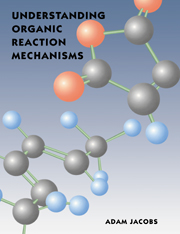Book contents
Summary
So far, we have looked at the basic principles of chemical bonding and reactivity, the driving forces behind reactions, and the properties of molecules that affect the way they react. It is now time to consider the reactions themselves.
Newcomers to organic chemistry are often frightened by the seemingly huge array of reactions that take place, and are apt to think that a working knowledge of all, or even most of them is impossible to acquire. However, looking systematically at the various types of reaction brings an understanding of large numbers of the reactions of organic chemistry within easy reach. In fact, there are only four reactions in organic chemistry: additions, eliminations, substitutions, and rearrangements. For convenience, we discuss pericyclic reactions in this chapter as a fifth category, but any pericyclic reaction can also be grouped into one of the above four categories.
In the same way that many complex processes are made up of a number of simple ones, chemical reactions that may appear complicated are made up of combinations of these four basic reaction types strung together. Complicated reactions that are not easily understood are rare in organic chemistry; apparent complexity is almost always due to a large number of individual steps taking place in the same reaction.
We shall return to the theme of complex reactions in Chapter 8, but for now we shall look at the basic steps of which all reactions are made up.
- Type
- Chapter
- Information
- Understanding Organic Reaction Mechanisms , pp. 158 - 212Publisher: Cambridge University PressPrint publication year: 1997



